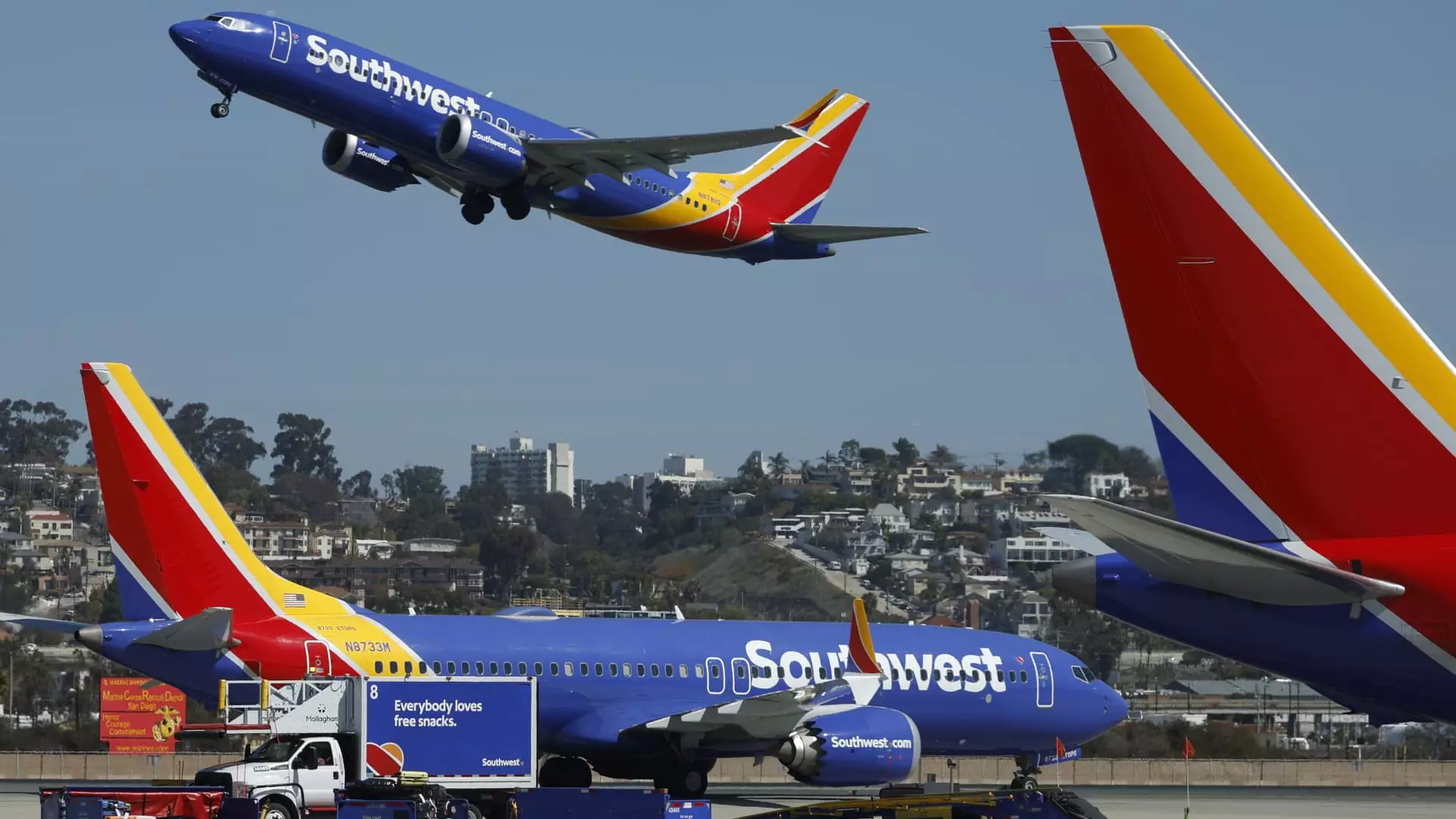In the ever-evolving landscape of air travel, Southwest Airlines is strategically repositioning itself to target a more affluent clientele. CEO Bob Jordan is vocal about the company’s willingness to adapt in order to cater to the demands of high-spending passengers. The airline, historically known for its budget-friendly model, is now looking into introducing premium seating, airport lounges, and possibly expanding into long-haul international routes. This reflects an understanding that the competitive spirit in aviation is not just about maintaining cost-effectiveness but also about enhancing customer satisfaction and service quality.
Gone are the days when airlines could solely rely on low fares to attract customers. As Jordan noted, “Whatever customers need in 2025, 2030, we won’t take any of that off the table.” This flexibility is key to addressing the needs of a changing customer base that increasingly expects more luxurious options while still wanting to enjoy the typically advantageous prices that Southwest has to offer. It appears clear that the airline recognizes the necessity of evolving beyond its traditional strengths to stay relevant in an industry that’s seeing significant enhancements from competitors.
Changing Policies in a Competitive Landscape
In addition to the embrace of luxury services, Southwest has also initiated a broader transformation. This includes revising long-standing policies such as open seating and uniform cabin arrangements. While these changes may alienate some loyal customers who appreciated the unique flying experience, they’re evidently designed to pivot towards a model that could accommodate richer market segments. By allowing amenities such as additional baggage and more comfortable seating, Southwest is endeavoring to align its offerings with those of airlines like Delta and American, who have already allocated substantial resources toward enhancing the overall passenger experience with additional features.
Jordan’s acknowledgment of “economic uncertainty” and the simultaneous already existing lower airfare in the U.S. indicates that Southwest isn’t merely passive in this competitive environment; rather, it is reactively becoming proactive. Implementing no-frills economy options was a big move, but ensuring it does not lose clients to competing airlines is now a pressing focus. It highlights the balancing act airlines must perform—keeping costs low while also providing the desired amenities that moderate to affluent travelers seek.
Nashville: A Case Study in Customer Needs
Interestingly, one geographic area where Southwest sees a particular potential for innovation is Nashville. With over 50% market share at Nashville International Airport, the region has unique customer demands that Southwest is keen to satisfy. The willingness of travelers in Nashville to seek out premium services and international routes underlines a shift in traditional travel patterns. As noted by Jordan, Nashville customers desire elements typical of a luxury airline—like lounges and first-class options—indicating that even in this singing city, the desire for traditional budget travel is being overshadowed by an appetite for a richer experience.
This speaks to a broader truth in the airline industry: fly in a way that aligns with customer desires or risk losing them. Jordan emphasized the importance of reducing customer migrations to other carriers by potentially introducing lounges and premium travel options. This strategic pivot towards high-end services represents a radical forward-thinking approach for Southwest, which has prided itself on being the make-do airline.
The Future of Southwest Airlines
While the immediate strategy includes waiting on new aircraft deliveries—specifically the Boeing 737 Max 7—Jordan hinted at the ambitions beyond short-haul trips. The expressed openness to consider long-haul options to Europe serves as an exciting prospect, a significant leap for a brand historically focused on domestic flights within the U.S. The willingness to explore new aircraft for this purpose demonstrates that Southwest is not clinging to its past but is instead envisioning a new horizon.
Moreover, partnerships with international carriers like Icelandair and China Airlines reflect a growing trend where airlines are not only competing with one another but also seeking synergies to enhance their reach and customer offerings. The vision of seeing a Southwest Airlines aircraft touch down in Europe is a bold assertion of confidence in a brand reimagined.
Rather than simply reacting to market pressures or economic constraints, Southwest Airlines is proactively seeking genuine innovation in service structure. Their ambition to blend affordability with increased customer-centric offerings signals a transformative shift aimed at retaining a competitive edge in an industry that has unpredictably high stakes. The question now is whether these changes can successfully shift the perception of the brand as a low-cost carrier to one that genuinely competes in the luxury space.

